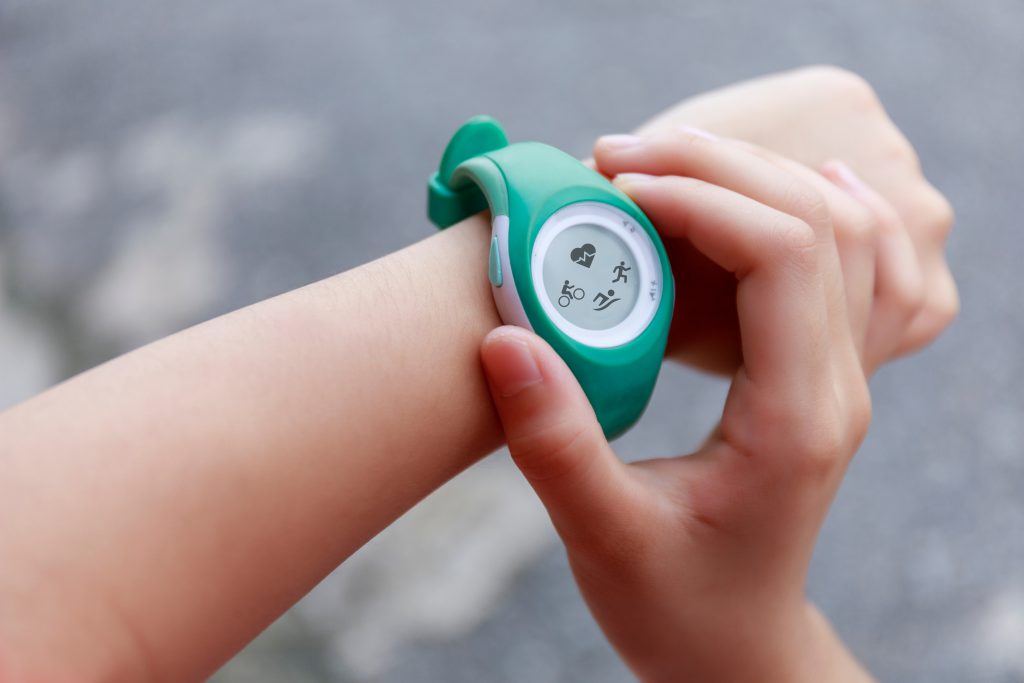As the world steamrolls further into the digital age, industries and institutions are being forced to adapt to the effects and impacts of technology. The healthcare sector is no exception. Over the last decade, technological advancements have revolutionised both the provision of healthcare, and the ways in which patients access medical information and communicate with health professionals (Dimitri, 2018). Innovation has further reached the pockets and palms of both adults and children, providing new opportunities and methods to self-monitor our health and well-being.
The benefits of new technologies speak for themselves. Medical practitioners are able to perform surgeries with more accuracy, diagnose conditions and monitor patients’ well-being with more efficiency, as well as work to prevent and manage illness in ways that have never been possible. In the home, non-health practitioners are able to use applications and devices to keep in touch with their health.
However, despite these novel advantages, the rapid development of child health innovation leaves much to be desired. Too often new technologies and their correlating systems have been repurposed from adult contexts and hastily applied to children – rather than specifically designed for children themselves (Dimitri, 2018). As such, child health technology often poses significant threats to children’s rights.
What is digital health technology?
The World Health Organization (WHO) defines health technology as “the application of organised knowledge and skills in the form of devices, medicines, vaccines, procedures and systems developed to solve a health problem and improve quality of lives” (WHO). The breadth of this definition is illustrative of the scale of technology’s reach within the healthcare sector. Among other developments, technologies are being crafted to facilitate remote health assistance to reduce hospital attendance and onerous disruption to patients’ lives.
In relation to children, this would enable young people to attend education while having conditions monitored biometrically, transferring information to clinicians almost immediately (Dimitri, 2018). These so-called ‘telemedical’ advancements should enable clinicians to identify child symptoms and irregularities early to prevent and reduce harm.
Beyond the reaches of the hospital, recent years have seen a boom in health applications and websites tailored for handheld devices. Wearable fitness devices and applications are at the forefront of this development, drastically changing the way in which health information is generated, assessed and utilised (Rich, 2020). These units of hardware and software are designed to promote healthy lifestyles, and increase understanding around health and fitness practices.

As shown by Michelle Obama’s ‘Let’s Move’ initiative, health applications and programmes can help children regulate their diet as well as their fitness levels (The Medical Futurist, 2019). However, children and young people must be educated on the use of these tools, especially given the fact that recent research suggests that the majority of young people are using applications and websites to monitor their well-being (Barr, 2020). Children must develop the skills to navigate this technological revolution and realize the accompanying health benefits.
Digital health and children’s rights
Digital health technologies provide new opportunities to realise children’s rights with greater reach than ever before. The eventual rollout of technologies enabling the provision of remote health care support should democratize medical service provision, making healthcare timely and accessible to children in remote communities or situations of crisis (UNCRC, 2021). Additionally, closer and more consistent monitoring of child health should generally increase children’s physical and mental well-being and protect them against grave harm.
Despite these potentially positive innovations, newfound technologies also carry risks. Technology is only useful to children if they have access to it; if digital inclusion is not prioritised in the rollout of new devices and systems, pre-existing inequalities could be increased. Moreover, if health technology is not designed with children in mind, these innovations may fail to consider some of the potential harms of gathering and utilising children’s data without their consent. Further still, developers must adequately research the intersections between children’s interaction with the digital space and their wider well-being.
In this regard, guidance must be provided to children and their caregivers to help them balance their children’s digital and non-digital lives (UNCRC, 2021). Pertinently, where technology is directly available to children via handheld and wearable devices, children and carers should be provided with guidance on how best to use these tools in day-to-day life. Digital health technology developers, providers and users hold a duty of care to ensure that their devices and systems are fit-for-purpose (Rich, 2020).
What can be done to improve the future of healthcare for children?
- Healthcare systems – As health care systems and governments work towards developing new health technology and ‘digitally engaged patients’, they must bear in mind the need to consider children as a specific target group of these innovations (Rich, 2020). Research must be conducted to monitor the rollout of these technologies, the ways in which they are being used by children and the effects they are having on child development. Where possible, children should be included in health policy design to ensure that their voices are heard on matters related to their health, privacy and security (Rich, 2020).
- Regulators, caregivers and educational institutions – Regulators, caregivers and educational institutions must keep pace with fast-changing technological environments to ensure that adults and children are aware of the benefits and risks of novel technologies. Beyond the children themselves, those responsible for protecting young people must develop the requisite knowledge to support their children through the digital space. It is fundamental that children are educated to understand the importance of life away from technology through frequent dialogue and conversations around the use of health technologies and their value (Digital Health Generation, 2021). This education is fundamental to ensure that children cooperate with beneficial health practices, as well as are comfortable using devices such as wellness applications and trackers to understand and monitor their own health.

At Humanium, we seek to raise awareness on the importance of children’s rights to food, education and protection. Join us in making children’s rights to a safe environment and accessible education a reality by sponsoring a child, making a donation or becoming a volunteer!
Written by Vanessa Cezarita Cordeiro
For more information:
American Red Cross Monster Guard
Digital Child Health Transformation Programme
Digital Doctoring: Wearable technology in pediatrics
References:
Digital Health Generation. (2021, April 26). ¨How to help your pupils lead healthy digital lives.¨
Digital Health Generation. (2021, April 26). ¨How to lead a healthy digital life.¨
The Medical Futurist. (2017, July 20). ¨The top 15 examples of gamification in healthcare.¨
The Medical Futurist. (2018, November 6). ¨How would a kid explain digital health in the future?¨
The Medical Futurist. (2019, June 11). ¨How to teach kids (digital) health literacy?¨
The Medical Futurist. (2020, August 27). ¨What parents should know about digital health.¨


